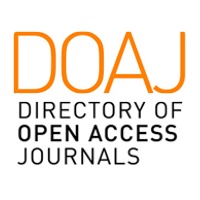m orphogenetic re a ctio n s OF LAVANDULA ANGUSTIFOLIA MILL. IN CuLTuRED A pical MERISTEM IN VITRO
Keywords:
lavender, morphogenetic potentialities o f isolated apical meristems of in culture in vitro, clonal micropropa gationAbstract
This article is devoted to the study of morphogenetic reactions of Lavandula angustifolia Mill. in culture of isolated lavender meristems in vitro depending on the genotype, composition and texture medium, stage clonal micropropagation. This article gives us the scientifically grounded use of nutrient composition o f specific hormones that determine the morphogenesis of lavender at every stage of cultivation in vitro.It was determined that optimal to induce morphogenesis in vitro isolated lavender meristem on solid nutrient medium Murashige and Skoog which are supplemented be kinetin (1.0 mg / 1) and gibberellic acid (1.0 mg / 1), and reached by 90.0 100.0% regeneration. Morphogenetic potency of isolated meristems are determined by genotype, which results in significant differences in quantitative terms o f the main biometric parameters and, consequently, different reproduction factor: the variety Synyeva - 12.45, Stepova - 10.06, in the sample 337-9 - 8.55 in sample 310-17 - 7.18. At the stage of lavender micropropagation is the optimal culture medium o f similar composition and multiplication factor and it depends on the genotype and the number of passages.Since the genome of each varieties and samples determine the different rate of shoots growth, there were obtained different reproduction factor: the variety Synyeva - 11,12 in variety Stepova - 10.42 in the sample 337-9 - 11.83, and in the sample 310-17 - 6.72. Reproduction ratio remained stable in a variety Synyeva and sample 337-9 through 8th passage (7,77-12,45 7,60-11,85 and respectively), Stepova grade to 7th passage (6.19 - 11.81) and in the sample 310-17 to 6th passage (6,14-8,37). The most effective to induce the root formation in lavender mikrosprouts on the medium culture which is supplemented by Indole-3-butyric acid and Indole-vinegar acid at a 0.5 mg / 1 concentration, which has rooting frequency of 100.0% in grades Synyeva, Stepova and sample 337-9, and 85.0% frequency of the sample 310-17. Number of roots and their length in the studied genotypes differed: the variety Synyeva formed 4.13 pc. root with length of 29.14 mm, grade Stepova had the largest number of regenerated roots - 6.28 pc. with 20.73 mm length. There were 4.53 pc. roots with the longest length - 32.51 mm in the sample 337-9. And sample 310-17 formed 2.52 pc. root with 25.14 mm length.Based on the established features of lavender morphogenesis in culture in vitro clonal micropropagation biotechnology was developed. It bases on providing the best biometric parameters of microplants.
References
Калинин Ф. Л. Методы культуры тканей в физиологии и биохимии культурных растений / Калинин Ф. Л., Сарнацкая В. В., Полищук В. Е. - К. : Наук. думка, 1980. - 488 с.
Alimgazinova B. Sh. New technologies in plant breeding / B. Sh. Alimgazinova // Нетрадиционное растениеводство, экология и здоровье: Труды VIII Междунар. симп. - Симферополь, 1999. - C. 269-270.
Назаренко Л. Г. Эфиромасличные, пряно-ароматические и лекарствен ные растения / Л. Г. Назаренко, Л. А. Бугаенко. - Симферополь : Таврия, 2003. - 202 с.
Кустова О. К. Изучение суточной динамики распускания цветков Lavandula angustifolia L. в условиях интродукции / О. К. Кустова // Промислова ботаніка: стан та перспективи розвитку: Матеріали VI міжнар. наук. конф. «Промислова ботаніка: стан та перспективи розвитку» (Донецьк, 4-7 жов тня 2010 р.). - Донецьк, 2010. - С. 274-278.
Hamza A. M. Direct micropropagation of English lavender (Lavandula angustifolia Munstead) plant / A. M. Hamza, М. Abd El-Kafie Omaima, M. M. Kasem // J. Plant Production. - 2011. Vol. 2, №1. - P. 81-96.
Егорова Н. А. Микроразмножение эфиромасличных растений с использованием культуры органов и тканей in vitro / Н. А. Егорова, А. Г. Криво- хатко, И. В. Ставцева, Л. И. Каменек // Таврійський вісник аграної науки. - 2014. - № 1. - С. 9-14.








